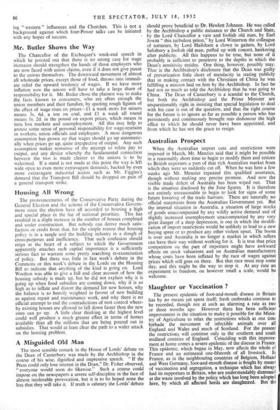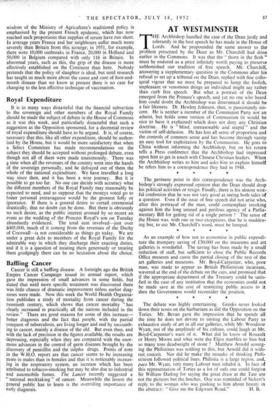Slaughter or Vaccination ?
The present epidemic of foot-and-mouth disease in Britain has by no means yet spent itself; fresh outbreaks continue to be recorded, though not at such an alarming a rate as two or three months ago. However there has been sufficient improvement in the situation to make it possible for the Minis- try of Agriculture to relax the restrictions which at one time forbade the movement of infectible animals over all England and Wales and much of Scotland. For the present the restrictions will continue only in the southern and south midland counties of England. Coinciding with this improve- ment at home comes a severe epidemic of the disease in France. This epidemic, which began in May, now affects the whole of France and an estimated one-fifteenth of all livestock. In France, as in the neighbouring countries of Belgium, Holland and West Germany, foot-and-mouth disease is fought by means of vaccination and segregation, a technique which has always had its supporters in Britain, who are understandably distressed at the waste involved by the policy which has long been adopted here, by which all affected herds are slaughtered. But th:. wisdom of the Ministry of Agriculture's traditional policy is emphasised by the present French epidemic, which has now reached such proportions that supplies of serum have run short. In average years France and her neighbours suffer much more severely than Britain from this scourge; in 1951, for example, there were 10,000 outbreaks in France, 20,000 in Holland and 50,000 in Belgium compared with only 116 in Britain. In abnormal years, such as this, the grip of the disease is more effectively established on the Continent than here. Nobody pretends that the policy of slaughter is ideal, but until research has taught us much more about the cause and cure of foot-and- mouth disease than we know at present there is no case for changing to the less effective technique of vaccination.



































 Previous page
Previous page